Argent Audio Pursang Speaker and Digital cables.
|
|
|
Clement Perry |
|
October 2004 |
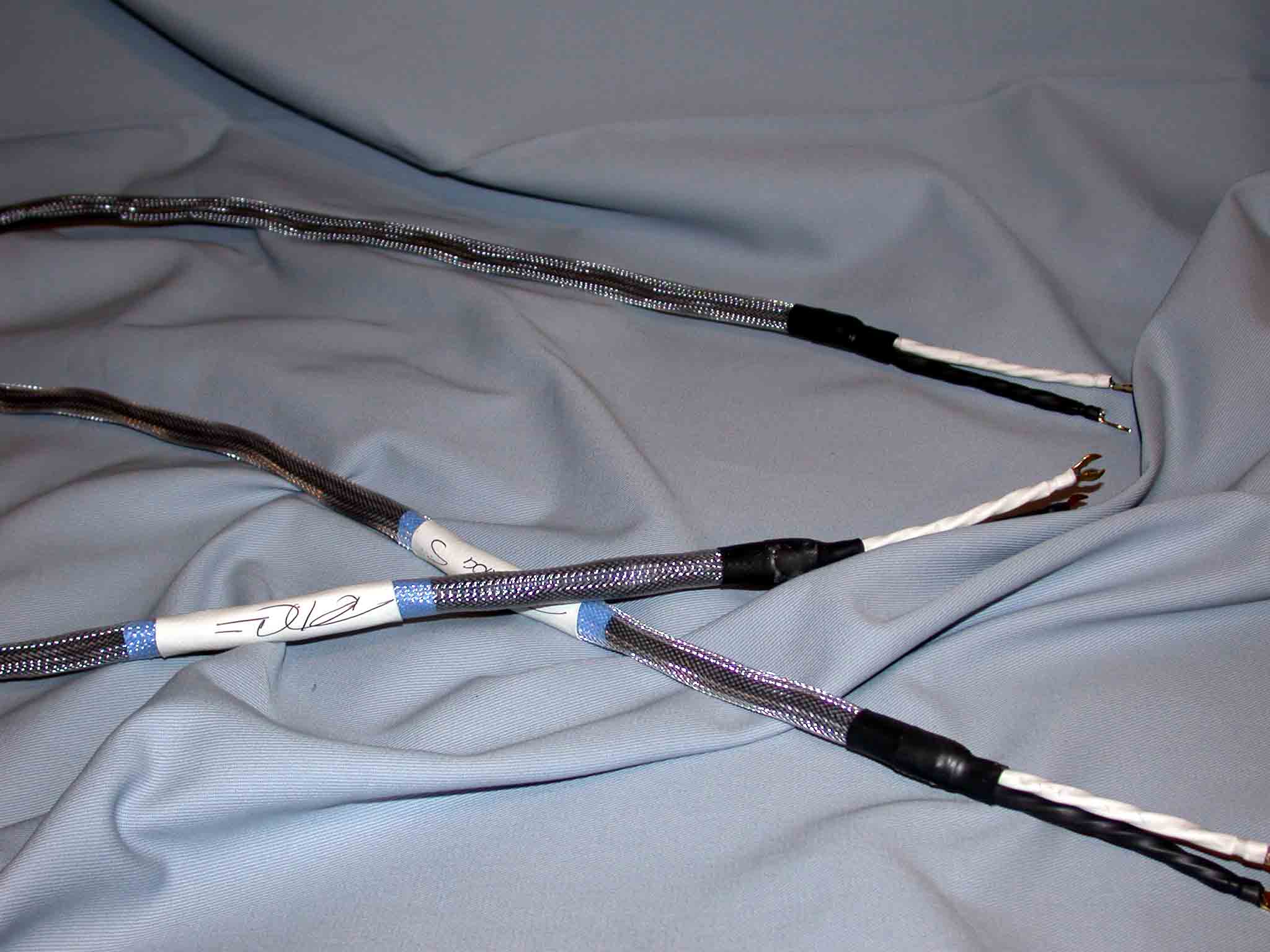
Ric Cummins is a modest type. A man who, for the years I’ve known him, has never made any claims that I would say were egotistically based or at the expense of another manufacturer. I’ve reviewed his products in the past and still am amazed by his Argent Room Lens, and to this day I still find him to be more of an artist than a crazed audiophile/designer (he is a sculptor by trade). He certainly appears to have both feet firmly on the ground. This is why I was so taken aback by his phone call requesting that I give his new cables a listen.
Any manufacturer expecting me to listen to him rant about how good their product sounds is barking up the wrong tree. I’ve become desensitized to all claims about performance. I would much rather hear a product in my own listening room and decide for myself. Cummins knows this and that is one of the things I respect most about him.
So, you ask, what are these cables?
Cummins chose the French word “Pursang” for its pure-blood or pedigree connotation. He came up with the new cable design only after “…developing a way to accelerate the discharge of capacitance from the Teflon dielectrics.” For the Pursang S Cummins uses hand-wound silver wire and employs “…the axial, asymmetric topology I developed several years ago because it absolutely disallows any ‘talking’ between the positive and negative through their magnetic fields. Since then we have focused keenly on the execution of these designs.”
The “S” signifies Pursang S as a heavier gauge cable and thus separates it from its less expensive sibling, the Pursang. Cummins goes on to state “…heavier gauge is capable of sounding more open and possessing greater dynamics.”
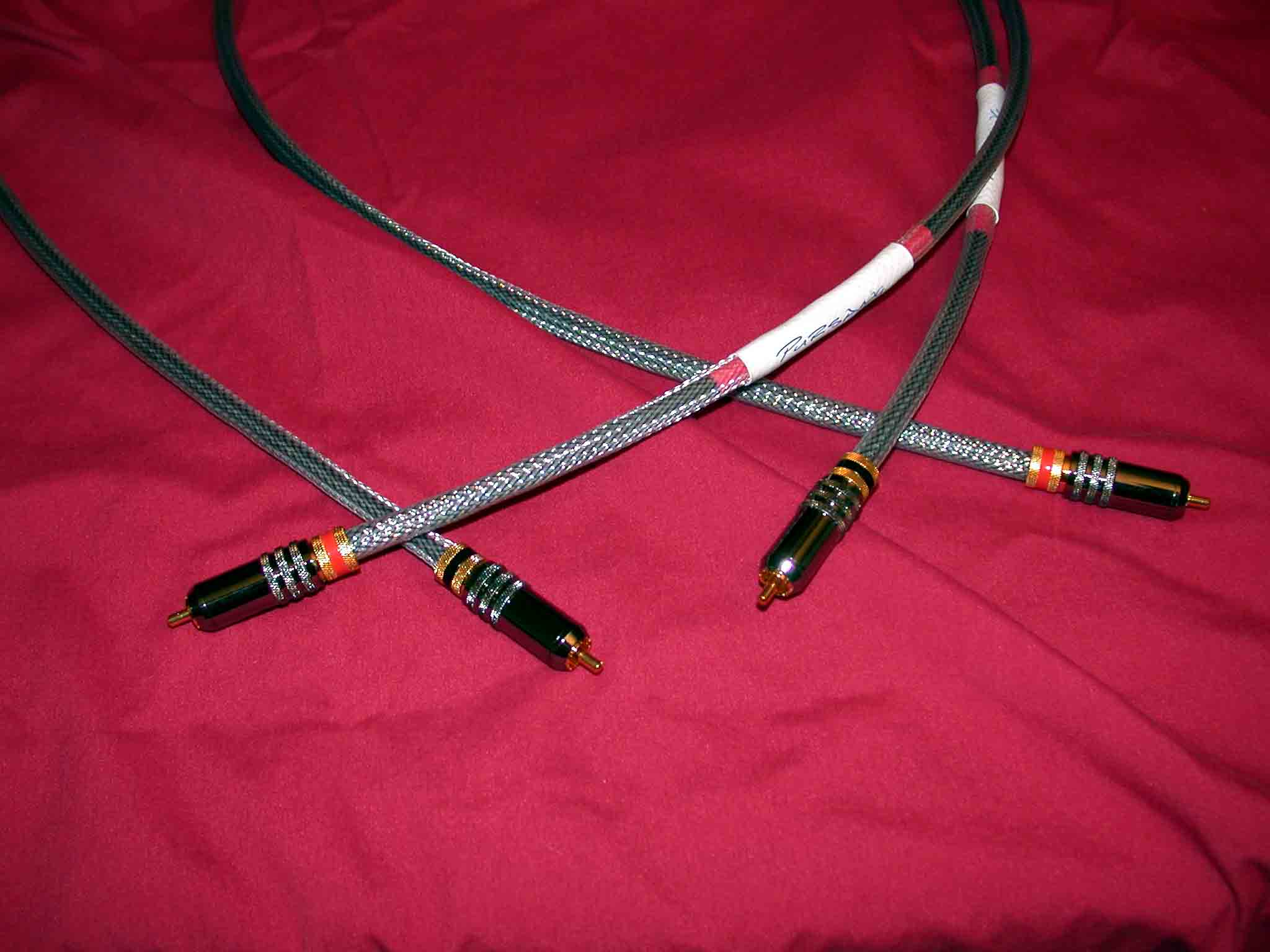 The Pursang S digital cables arrived, as I requested, in XLR configuration. (I find balanced connections to be optimal for my digital setup, surpassing single-ended RCA connectors.) I requested three one-meter length and one four-meter length digital cable. One goes from my Gryphon Mikado CD player (used as a transport) to the Big Ben Word Clock. One from the Big Ben to the Tact 2.2X preamp, and one to loop back through the Big Ben. Finally, the four-meter length goes from the Big Ben to the two Tact M2150 amplifiers (which link through a single RCA Pursang S digital). In addition, Cummins sent two pair of six-foot Pursang S speaker cable which enable bi-wiring the Ascendo System M loudspeakers.
The Pursang S digital cables arrived, as I requested, in XLR configuration. (I find balanced connections to be optimal for my digital setup, surpassing single-ended RCA connectors.) I requested three one-meter length and one four-meter length digital cable. One goes from my Gryphon Mikado CD player (used as a transport) to the Big Ben Word Clock. One from the Big Ben to the Tact 2.2X preamp, and one to loop back through the Big Ben. Finally, the four-meter length goes from the Big Ben to the two Tact M2150 amplifiers (which link through a single RCA Pursang S digital). In addition, Cummins sent two pair of six-foot Pursang S speaker cable which enable bi-wiring the Ascendo System M loudspeakers.
Many of you already know I am a fan of Analysis Plus Gold cable. Grossly expensive at nearly $5,000 for the speaker cables and $2,000 for the digital link—especially when one considers Analysis Plus first became known for their more affordable line of cables. Analysis Plus Gold cables have taken me to aesthetic realms I wouldn’t have believed possible. So I knew this was going to be a very challenging evaluation for the Pursang S. Granted, the Pursang is half the price of the AP Gold, but the fact remains AP Gold is my reference and all other cables will be compared to it.
The first thing one notices about the Pursang S is its wide-as-the-morning-sky top-end. The treble response of this set of cables is quite sparkly, yet hardly overdone, harsh or bright. There’s an effervescence to the upper frequencies that is alluring, if not downright addictive. Midrange is spot-on accurate, though compared to AP Gold it is somewhat lacking in weight.
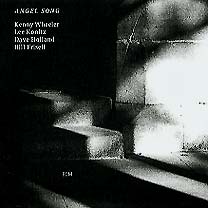 Bass is another quality that makes the Pursang S a winning design. The timbre of Dave Holland’s double bass on “Nicolette” from the wonderful CD Angel Song (ECM 1607) is alive, yet distant and spacious. The Pursang S renders Holland’s performance crystal clear, right-sized, with uncanny image specificity. There is improved focus compared to the AP Gold, placing Holland just right of center, against an amazingly black and velvety background. His band mates are staggered in front and to the left and right of his instrument—and never too far apart. There is no sense of crowding the microphone or bunching up too close; each instrument is in its own space, suggesting a larger, well-lit venue.
Bass is another quality that makes the Pursang S a winning design. The timbre of Dave Holland’s double bass on “Nicolette” from the wonderful CD Angel Song (ECM 1607) is alive, yet distant and spacious. The Pursang S renders Holland’s performance crystal clear, right-sized, with uncanny image specificity. There is improved focus compared to the AP Gold, placing Holland just right of center, against an amazingly black and velvety background. His band mates are staggered in front and to the left and right of his instrument—and never too far apart. There is no sense of crowding the microphone or bunching up too close; each instrument is in its own space, suggesting a larger, well-lit venue.
The musicians on this CD are impressive. In addition to Dave Holland, there are Kenny Wheeler (trumpet, flugelhorn), Lee Konitz (alto sax), and Bill Frisell (electric guitar), all on one greatly recorded disc (engineered by none other than Jan Erik Kongshaug). Each of the nine tracks is a gem of great musicianship and engineering. The bass is wonderfully lucid and articulate on a wide-open soundstage with more natural overtones and each solo performance is illuminated— or, more convincingly, contrasted against that velvety black backdrop.
On the whole, music via the Pursang S is fast, tight and cohesive with a rhythmical quality that is spelled m-u-s-i-c-a-l. This is due to a very transparent and smooth transition between the treble and midrange, achieved with remarkable delicacy and without any euphonic trickery. Moreover, there are no perceptible bumps or dips in the frequency response, while this cable’s purity quotient (or lack of grain) is among the best I have heard. This I surmise is one of many reasons the upper frequency sounds so utterly outstanding.
 I was even more impressed when I went to my classical recordings. Massed strings through the Pursang S proved this cable possesses something special when it comes to high frequency purity and extension. The Pursang Ss out-distanced my reference AP Gold in this critical area. Telarc’s newly released hybrid surround SACD of Berlioz’s Requiem, featuring the Atlanta Symphony and tenor Frank Lopardo (Telarc SACD-60627), is quite a recording. When you have cables that can take you from the atmosphere of a small jazz speakeasy to the grandeur of a huge symphony and choir and remain utterly transparent, as this cable can, you know you are in the presence of greatness. (By the way, I listened to this Telarc disc from beginning to end. I should add that to do this is usually no easy feat, particularly when you own as many CDs as I do, and listen as loud and intensely as I tend to. But I must admit, this recording is very well captured—with voices sounding as representative of the original venue as I’ve heard—making it quite easy to listen to and enjoy from start to finish.)
I was even more impressed when I went to my classical recordings. Massed strings through the Pursang S proved this cable possesses something special when it comes to high frequency purity and extension. The Pursang Ss out-distanced my reference AP Gold in this critical area. Telarc’s newly released hybrid surround SACD of Berlioz’s Requiem, featuring the Atlanta Symphony and tenor Frank Lopardo (Telarc SACD-60627), is quite a recording. When you have cables that can take you from the atmosphere of a small jazz speakeasy to the grandeur of a huge symphony and choir and remain utterly transparent, as this cable can, you know you are in the presence of greatness. (By the way, I listened to this Telarc disc from beginning to end. I should add that to do this is usually no easy feat, particularly when you own as many CDs as I do, and listen as loud and intensely as I tend to. But I must admit, this recording is very well captured—with voices sounding as representative of the original venue as I’ve heard—making it quite easy to listen to and enjoy from start to finish.)
The unmistakable sweetness, again without euphonic masking, at the upper frequencies, while the midrange and bass remain in a neutral stance, is probably the Pursang S’ most alluring quality. The strings maintained their edge and zip without ever losing their grip and become hard or strident. This created a sense of soundstage imagery—in my well padded listening room—that took on a lighter and airier feel and that actually gave the impression of being in a larger room. The Pursang S has a very natural quality about them that makes them unmistakably musical, thus a music lover’s delight.
Tympani and deep bass passages didn’t have the power of the AP Gold, but this is strictly a matter of taste. To be fair, I don’t think the Pursang S matches the AP Gold’s midrange density, which is a richer, albeit thicker, more textured sounding cable. But I would also venture to suggest it might not be as neutral as the Pursang S. When switching back to the all AP Gold what immediately became clear was a sense of weight and authority. The AP Gold does make instruments sound weightier and closer to your listening position, with near-wraparound soundstage width.
If I had my druthers I would have to choose the AP Gold’s midrange over the Pursang S. But at the same time, I would also want the Pursang S’ upper frequency sweetness and extension over the more laid back and less brilliant AP Gold.
One thing remains certain, the Pursang Ss are among the best digital and loudspeaker cable to have graced my system. Further, I’ve taken on them on the review circuit and they’ve come away clearly exceptional in every system they were placed. Winning the review circuit’s praise is really the only way any product wins my vote unequivocally.
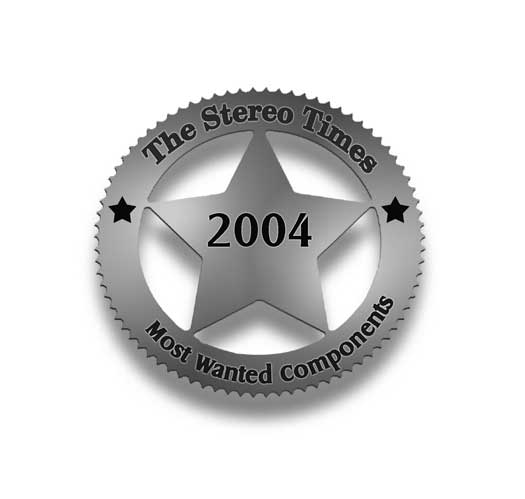 Choose your poison, because the both the Pursang S cables and the AP Gold are killers in terms of their overall musicality, and that is the single most important factor in any design as far as I am concerned. There is a human quality the Pursang S cables embody that very few cables possess. It is for this reason alone I awarded the Pursang Publisher’s Choice, Most Wanted Component 2004! Here’s a cable that I believe Cummins designed more for the music lover and not so much the audiophile. If you happen to be both, then consider yourself twice fortunate.
Choose your poison, because the both the Pursang S cables and the AP Gold are killers in terms of their overall musicality, and that is the single most important factor in any design as far as I am concerned. There is a human quality the Pursang S cables embody that very few cables possess. It is for this reason alone I awarded the Pursang Publisher’s Choice, Most Wanted Component 2004! Here’s a cable that I believe Cummins designed more for the music lover and not so much the audiophile. If you happen to be both, then consider yourself twice fortunate.
In this industry talk doesn’t get respect. Give this cable a listen: you just might thank me.
_____________
Manufacturers comments:
I must sincerely thank Clement for this wonderful review; it recognizes and honors the research and work we have done in developing these cables. I must admit that we never intended to enter into this particular market. I developed the topologies during research we were conducting into the influence of cables in speaker design and provided some of our speaker owners and friends with cables to help them get the most out of their systems. It was their enthusiasm that propelled us into this market, ironically displacing our other lines of products.
By selling directly to enthusiasts, we are able to maintain lower prices that directly reflect our costs to produce the Pursang cables. This is despite the fact that the designs do not lend themselves to machine winding; they are each built, by hand, to the needs of each client.
We strive to build a cable that is neutral, not adding weight or emphasis where it didn’t exist in the recording. I have always seen myself as more a “translator” than an artist; it is my part to try to convey, to articulate with supreme accuracy, the “vision” (albeit auditory) of the artist, the singer, the composer, or the conductor. I should not presume to influence their work.
So, again, I thank Clement for recognizing and appreciating the fruits of our pursuit. He has expressed the nature of our drive more clearly than I could have.
Ric Cummins
_________
Specifications: Price:
Pursang IC’s: $900 .75m pair
Pursang Digital: $500 .75m
Pursang speaker: $1575 8 foot pair
Pursang S speaker: $2575 8 foot pair
Contact:
Argent/Rosinante
4812 Tempe St
Lawrence KS 66047
785 331 4123
www.roomlens.com
godasse@lawrence.ixks.com
![]()
Don’t forget to bookmark us! (CTRL-SHFT-D)
Stereo Times Masthead
Publisher/Founder
Clement Perry
Editor
Dave Thomas
Senior Editors
Frank Alles, Mike Girardi, Russell Lichter, Terry London, Moreno Mitchell, Paul Szabady, Bill Wells, Mike Wright, and Stephen Yan,
Current Contributors
David Abramson, Tim Barrall, Dave Allison, Ron Cook, Lewis Dardick, John Hoffman, Dan Secula, Don Shaulis, Greg Simmons, Eric Teh, Greg Voth, Richard Willie, Ed Van Winkle, Rob Dockery, Richard Doran, and Daveed Turek
Site Management Clement Perry
Ad Designer: Martin Perry




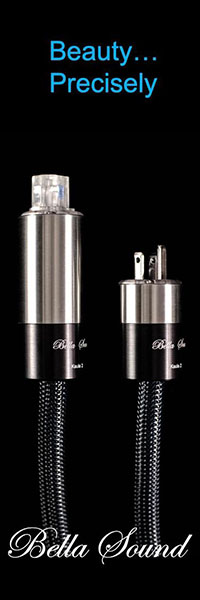
Be the first to comment on: Argent Audio Pursang Speaker and Digital cables.